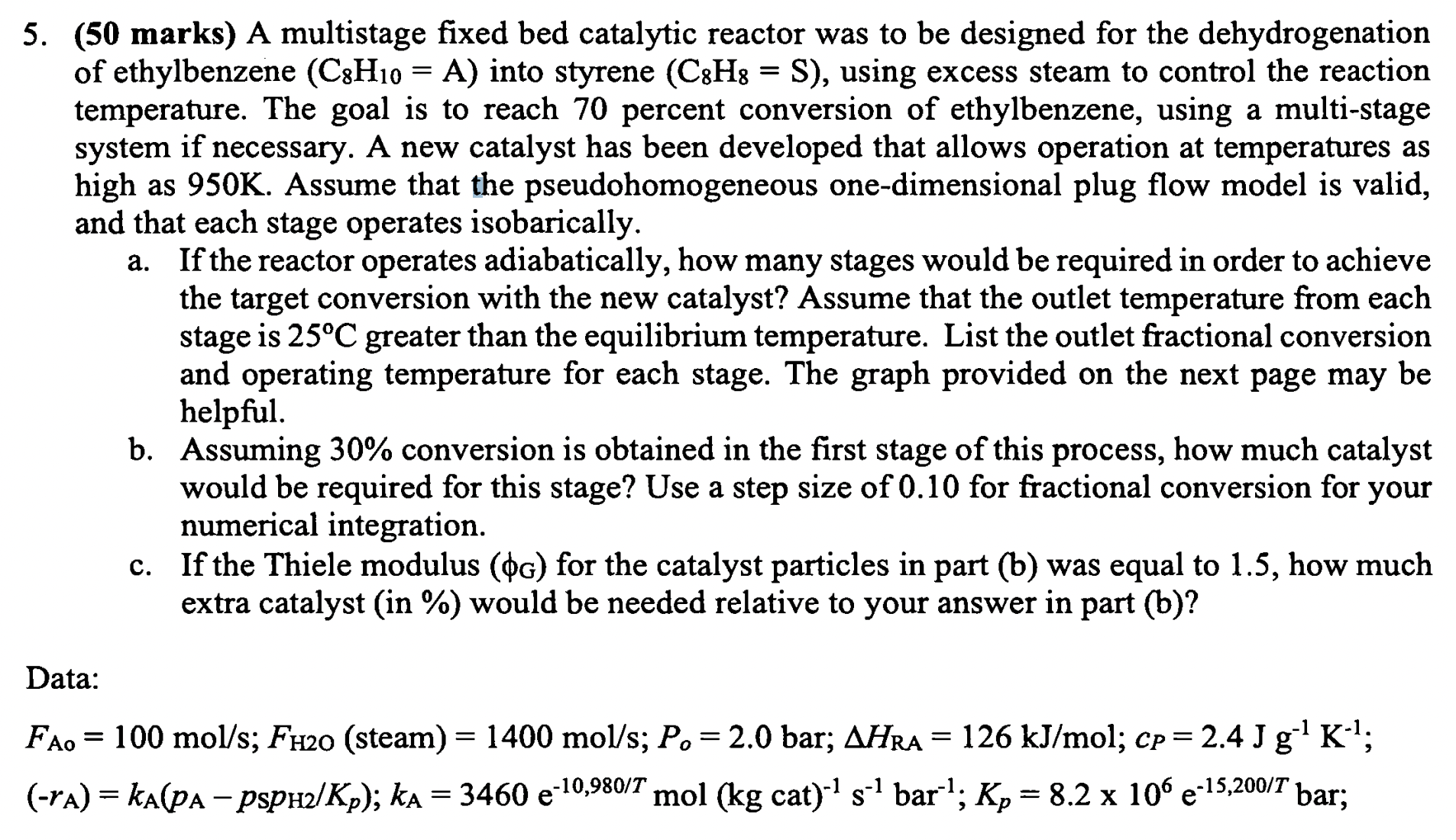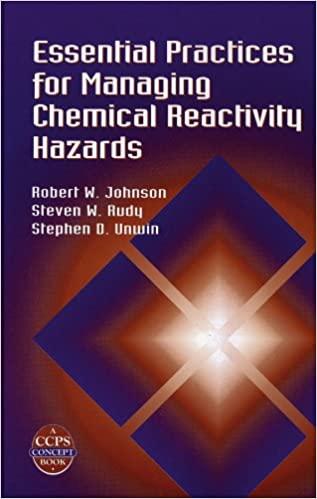Answered step by step
Verified Expert Solution
Question
1 Approved Answer
( 5 0 marks ) A multistage fixed bed catalytic reactor was to be designed for the dehydrogenation of ethylbenzene ( 5 0 marks )
marks A multistage fixed bed catalytic reactor was to be designed for the dehydrogenation of ethylbenzene marks A multistage fixed bed catalytic reactor was to be designed for the dehydrogenation
of ethylbenzene into styrene using excess steam to control the reaction
temperature. The goal is to reach percent conversion of ethylbenzene, using a multistage
system if necessary. A new catalyst has been developed that allows operation at temperatures as
high as Assume that the pseudohomogeneous onedimensional plug flow model is valid,
and that each stage operates isobarically.
a If the reactor operates adiabatically, how many stages would be required in order to achieve
the target conversion with the new catalyst? Assume that the outlet temperature from each
stage is greater than the equilibrium temperature. List the outlet fractional conversion
and operating temperature for each stage. The graph provided on the next page may be
helpful.
b Assuming conversion is obtained in the first stage of this process, how much catalyst
would be required for this stage? Use a step size of for fractional conversion for your
numerical integration.
c If the Thiele modulus : for the catalyst particles in part b was equal to how much
extra catalyst in would be needed relative to your answer in part b
Data:

Step by Step Solution
There are 3 Steps involved in it
Step: 1

Get Instant Access to Expert-Tailored Solutions
See step-by-step solutions with expert insights and AI powered tools for academic success
Step: 2

Step: 3

Ace Your Homework with AI
Get the answers you need in no time with our AI-driven, step-by-step assistance
Get Started


